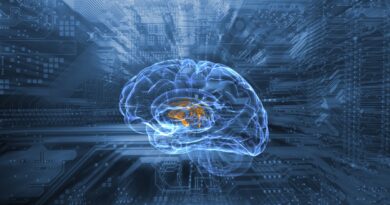Accuracy and Weaknesses of the Human Senses
Senses as human beings have always enhanced brains, and they always connect with one’s brain as one is engaged in the thought process. They are reliable tools but at times they often fail to transmit accurate data to the brain. When a person is ill, drowsy, or exhausted the senses tend to be less efficient. At times senses are accurate in terms of delivery but things are not as they appear. Sensing normally takes place before a thought occurs for infants but when it comes to adults, it occurs concurrently while engaging in thoughts (Kirby & Goodpaster, 2007).
Adults repeatedly return to their senses to invigorate data, seek new data, and reinforce thoughts with relevant examples, and structures of thinking. It is debatable to assume that there is nothing in the mind unless it is first in the senses. Human senses act as enhancers inform of lenses or amplifiers. They are extremely receptive. A human being can comfortably hear a sound vibrating as high as 20,000 cycles per second, and that is the reason why human beings can differentiate peoples’ voices (Kirby & Goodpaster, 2007).
When it comes to sight, a normal person can spot a candle light that is 20 miles away on a clear night. Smell detection is also quite remarkable, since a normal person can be able to detect the smell of a single molecule of coffee or bacon from five billion different molecules. The senses act as food for the brain and their input is essential for thinking (Kirby & Goodpaster, 2007).
Analysis
The study will highlight the accuracy and weaknesses of the human senses as they pertain to thinking by giving reasons to explain the accuracy or inaccuracy of sensory information.
A normal human being has five external senses which include smell, sight, touch, taste, and hearing. These senses guide the general interpretation of one’s environment although it should not be assumed to be the only data available. These senses provide a good idea of the surrounding, but not all possibilities for sensory input (Price, 2008). There is a restriction in knowledge of reality, based on the restriction of one’s flesh. A good example is while comparing humans with animals.
Human senses might be less sensitive than the same sense of another animal. An owl can spot a mouse that is 150 feet away from them using very dim light, while bees have the ability to see infrared lighting that cannot be seen with a naked human eye. As much as both animals and humans share these senses, animals are able to pick up the same data and duplicate it without using technological aid (Price, 2008).
Different humans also vary in terms of sensory input capabilities. There are people who have genetic variations that increase or reduce the senses as compared to normal people. A good example is an individual who is born without certain smell receptors, limiting the ability of that individual to pick up certain smells, the condition is known as anosia (Price, 2008). These variations in the victims make it impossible for the human brain to process data that is easily processed by others. Experiences also should not be regarded as entirely relative but restricted.
Reality is normally perceived to be something out in the open that can be understood by anyone, but that is rarely the case. Reality is based on one’s interpretation of what our senses portray to be in existence. Since there is no uniform sensory analysis that is for all individuals, it is safe to assume that different people do not share the same reality. Many people at times choose to believe what they are told exists purely based on faith, and they never experience or validate. What is real for other people is just a mental construct for a person who has not experienced it. Reality should be considered to be relative and not a universal perception.
Conclusion
The study has clearly illustrated that powerful senses feed and in most cases has the potential to mislead the mind. The study has also noted that acute senses can be enhanced by technology, and consciousness of reality at times alerts us. It is however unwise to conclude that just because a person has never experienced something, it is not a reality.
For example just because one has never experienced a car accident, does not mean car accidents do not happen. Sensory receptors do a commendable job to spread and prosper. One should also shy away from assuming that humans have already figured everything out in the world. A lot has been discovered but there is still more that is likely to remain beyond man’s understanding and reach.
References
Kirby, G. R., & Goodpaster, J. R. (2007). Thinking: An Interdisciplinary Approach to Critical and Creative Thought,. Chicago: Prentice Hall.
Price, R. (2008). Sensory Perception Limitations. Howard Hughes Medical Journal , 6-10.





Your picture has me hypnotized.